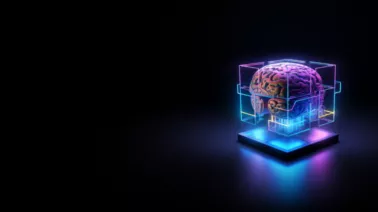
Udacity is excited to introduce the newest addition to our School of AI: the Machine Learning Engineer for Microsoft Azure Nanodegree program. In this program, students will use Azure Machine Learning to build real-world models and measure their performance.
What is a Machine Learning Engineer?
Machine learning (ML) engineers specialize in building, training, and validating machine learning models to create artificial intelligence products. Have you ever browsed your “Discover Weekly” playlist or looked at game recommendations on Xbox? Those are both made by machine learning engineers.
Several large companies have full engineering departments specifically for their ML engineers. What’s more, according to an Indeed report, the average machine learning engineer makes over $145,000 a year!
According to LinkedIn’s Emerging Jobs Report for 2020, jobs in artificial intelligence have seen an annual growth rate of 74% annually over the last four years, and the job growth is not expected to slow down anytime soon. If there has ever been a perfect time to add machine learning skills to your resume, it’s now.
What is Microsoft Azure?
Microsoft Azure is a cloud platform that has more than 200 products and services, to build, run, and manage applications with the tools and frameworks of your choice. These services include databases, machine learning, IoT, blockchain, and more. Over 85% of Fortune 500 companies use Azure.
Azure Machine Learning (AML) is an enterprise-grade machine learning service to build and deploy models. Using AML, data scientists and ML engineers can accelerate the end to end machine learning lifecycle of building, training, and deploying ML models.
Additionally, students enrolled in Udacity’s Machine Learning Engineer for Microsoft Azure Nanodegree program are able to use hands-on Microsoft Azure Labs to complete their learning objectives.
Machine Learning Engineer Program Details
The Machine Learning Engineer for Microsoft Azure Nanodegree program will prepare you to take on machine learning roles by strengthening your skills in ML and providing practical experience in training, validating, and evaluating ML models with Microsoft Azure. This Nanodegree program will also help prepare students for Microsoft’s Exam DP-100: Designing and Implementing a Data Science Solution on Azure.
To get the most out of this course, it’s important to have a foundation in machine learning concepts, including supervised and unsupervised learning, feature engineering, and classic ML algorithms (like linear regression and k-means clustering). If you need to build that foundation, check out Udacity’s free Introduction to Machine Learning course.
Additionally, a solid understanding of basic Python programming is necessary to be able to complete the projects in this program. Students should be able to read and write Python scripts, and know how to use variables, loops, modules, conditionals, and functions. Finally, a background in statistics can help students understand ML models, including topics such as data distributions and basic linear equations.
In as little as three months (at 5-10 hours a week), students who enroll in the Machine Learning Engineer for Microsoft Azure Nanodegree program will learn how to use the Azure ML SDK to design, create, configure, optimize, and manage machine learning pipelines in Azure, as well as train and deploy ML models in Azure.
Specific projects include:
Project 1: Optimizing an ML Pipeline in Azure
Learn how to use tools such as scikit-learn, Hyperdrive, AutoML, and the Azure ML SDK for constructing and configuring pipelines, importing data, and finding optimal ML models. This project focuses on using experiments to understand which machine learning methods to use and then explaining the findings.
Project 2: Operationalizing Machine Learning
Train a ML model using AutoML and then deploy it to a production environment. Learn how to select targets for deployments, enable application insights, determine baseline performance, and scan logs for issues.
Project 3: Training and Deploying a Machine Learning Model in Azure
Choose an external dataset, import it to an Azure workspace, train a model of your choosing with the dataset using AutoML, and again with custom set hyperparameters using HyperDrive. Compare the two models for performance and then deploy the better one to a production environment.
Learning from Top ML Instructors
To develop this program’s world-class curriculum, we collaborated with professionals from top-rated tech companies and partnered with Microsoft. Each of these collaborators contributed guidance and feedback to focus the program on the most in-demand skills. Each of the instructors has extensive machine learning, software engineering, and teaching experience.
- Noah Gift, Instructor and ML Expert at Northwestern, Duke, Berkeley, and UC Davis
- Alfredo Deza, Software Engineer at Anchore
Enroll Today
If you’re interested in building up your skills in machine learning, particularly with Microsoft Azure, this is the program for you.
Keep in mind that students will get free access to Azure software throughout the program.
With Udacity’s combination of hands-on project-centric learning, technical mentor support mentorship, and industry-aligned careers services, there’s no better way to meet the demand than by registering today for the Machine Learning Engineer for Microsoft Azure Nanodegree program.
Enroll now to learn more!



